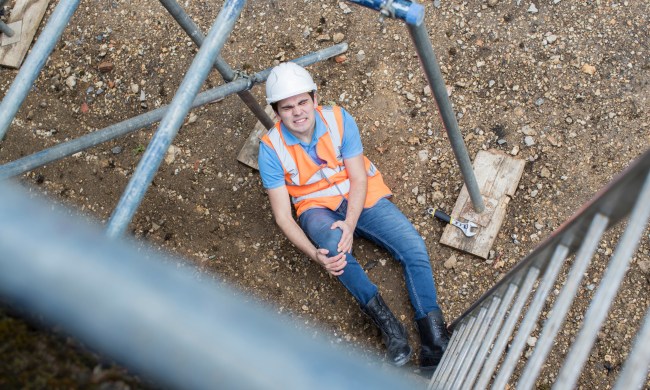One of the challenging parts of any roof repair is being able to measure the roof accurately. Measuring a roof is crucial when planning out your material purchases before any roofing project.
A new roof is a significant investment, thus, accurate measurements are critical when determining construction costs. Accurately measuring a roof may seem challenging, given it requires a tremendous amount of detail that could result in costly errors. However, how to measure a roof can be much simpler than you may think. This guide will give you information on how to measure a roof like a pro while saving time and money in your roofing project.

Roofing square measurement
Contractors often mention a concept called “roofing square” when discussing how to measure a roof. However, many mistake this for a square foot measurement. When measuring a roofing square, it’s essential to know this is a measurement solely related to roofing, while not comparing it to any other measuring variable, such as square feet, meters, yards, or miles.
Roofing companies often use the roofing square, and it’s approximately equivalent to 100 square feet. This measurement doesn’t change whether it’s a square of shingles or a square of tarp. The reason for this is that roofing squares are used to calculate the expenses of materials and labor, and it’s simpler than metric measurements, such as square feet or yards.
Measuring a roof from the ground
How to measure a roof from the ground may seem nearly impossible, but it can be relatively simple to do. Before you begin measuring from the ground, one tip to understand is that each tab on a three-tab shingle measures approximately 11 inches wide by 6 inches high. Below is a simple method that will help you count shingles when measuring a roof from the ground.
- Start by counting the number of shingles from left to right, which will provide the total width of the section in feet.
- Then count the number of shingles between the gutter and the peak of the roof.
- Divide that number by 2, which gives you the height measurement of the roof.
- Multiply the 2 numbers together, and the result is the total square feet of this particular section.
- Repeat these steps for each of the remaining sections.
In the event of any triangular-shaped roof sections, such as dormers, count the shingles from side to side or the widest point and then calculate the shingles from the gutter to the peak. Additionally, make sure you test this method a few times to ensure it’s the most accurate for your roofing project.
Calculating shingles
You’ll find most roof shingles sold by the bundle or by the square. Furthermore, the heavier the shingle is the more required bundles per square. For a traditional asphalt shingle roof with between 4/12 and 9/12 pitch, three bundles to a square are the most common shingles to purchase. In order to figure out the number of bundles you need for your new roof, it’s crucial to measure the roof.
The most accurate method to measure a roof for calculating shingles is by measuring each roof plane. If the roof planes are rectangular, multiply the length of the plane times the width of each plane, and you’ll get the square footage. Then add up the square footage of each plane. If the roof is too steep to measure safely, refer back to the method of measuring a roof from the ground.
Once you measure the roof, you must allocate extra shingles to offset for additional shingles needed for the waste factor. The reason for this is that you need more shingles for starter courses along the eaves, rakes, hips, and ridges.
The rule of thumb is to calculate the extra amount needed and adjust by percentage. For example, a simple roof can be figured to 5% as the waste factor, and a roof with more open valley sections adds 10%. Some shingles will inevitably be damaged by dropping, improper nailing, or another external factor. Ideally, one bundle is enough, but allocate a few more bundles if you’re not a seasoned roofer.

Closing thoughts
Measuring a roof and calculating the number of shingles you need can be less complicated and more straightforward than meets the eye. Understanding the roofing square measurement is one significant component that can make measuring a roof easier. Like a pro, measuring from the ground or safely from the roof gets you an accurate measurement that can help you minimize waste and extra cost.



